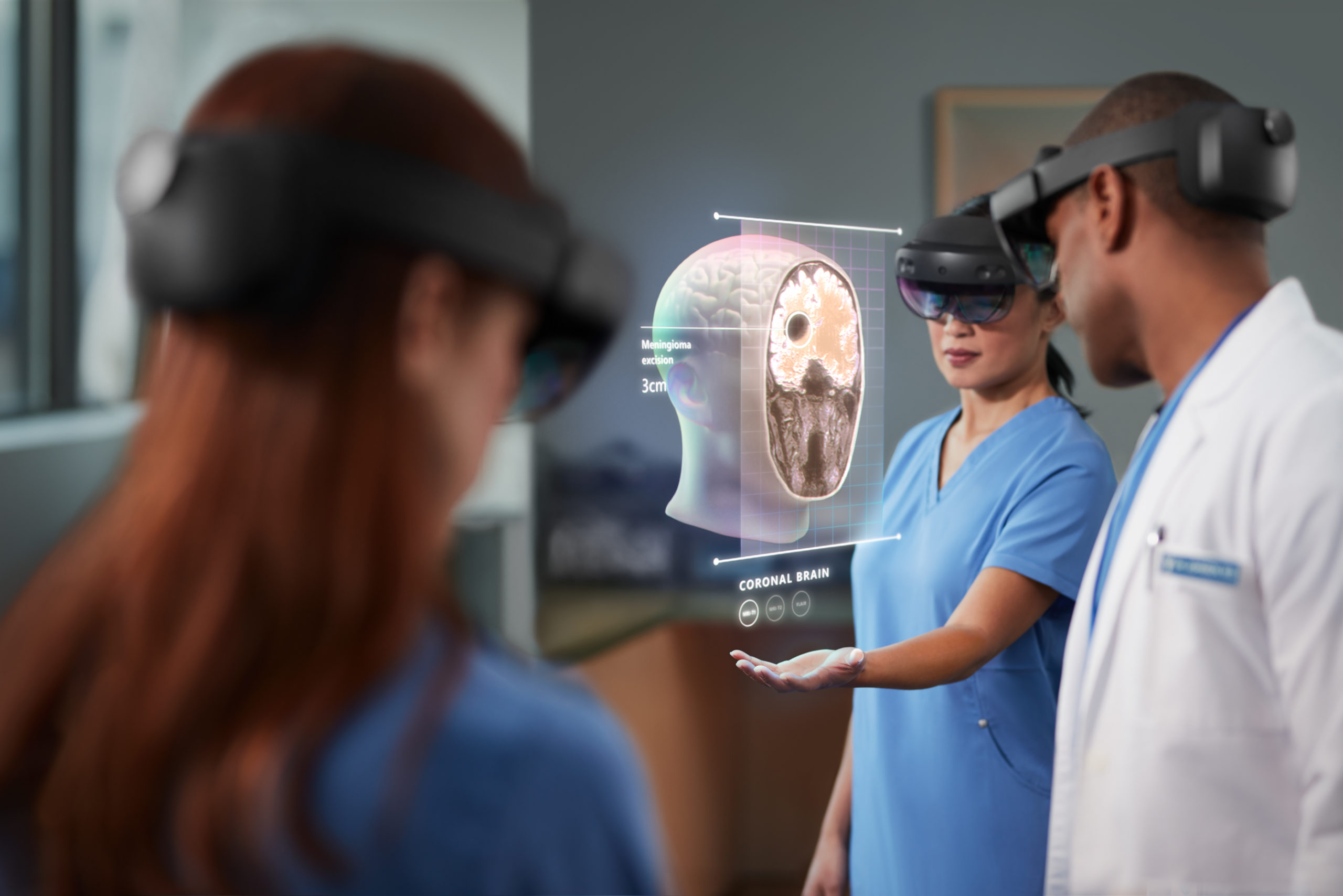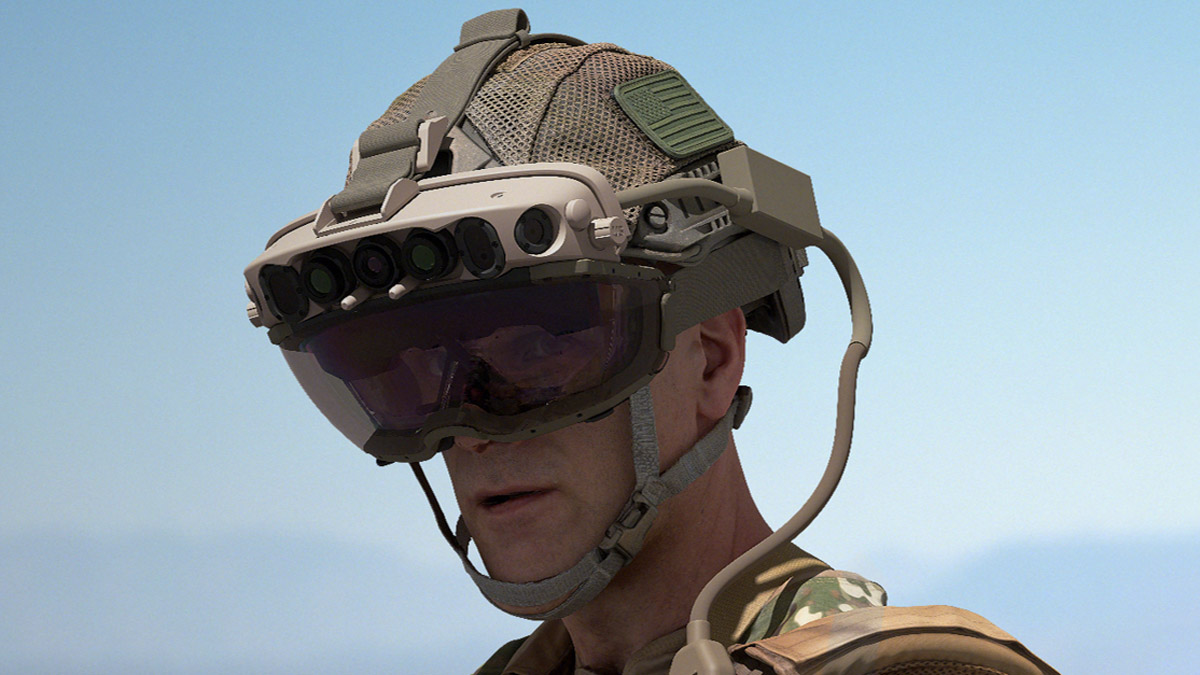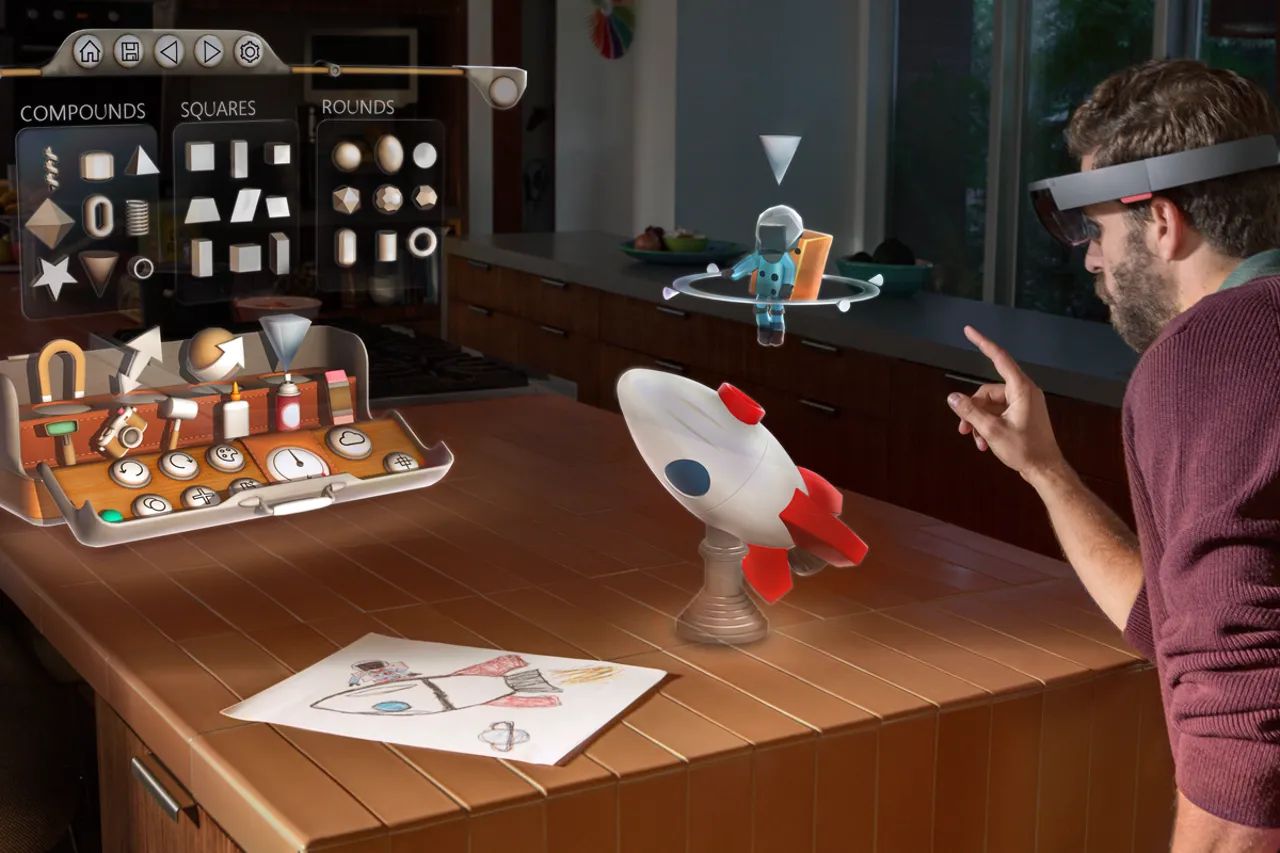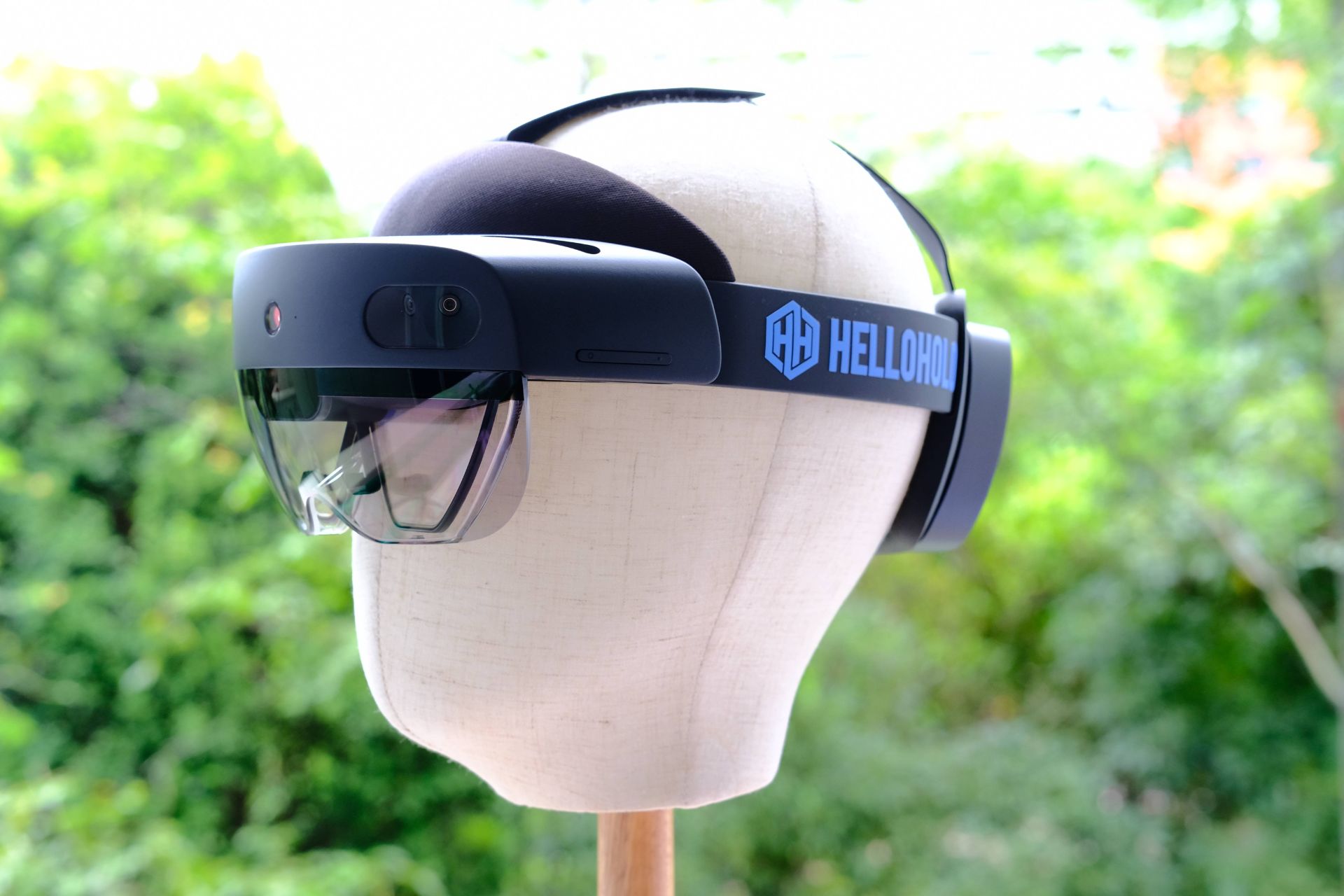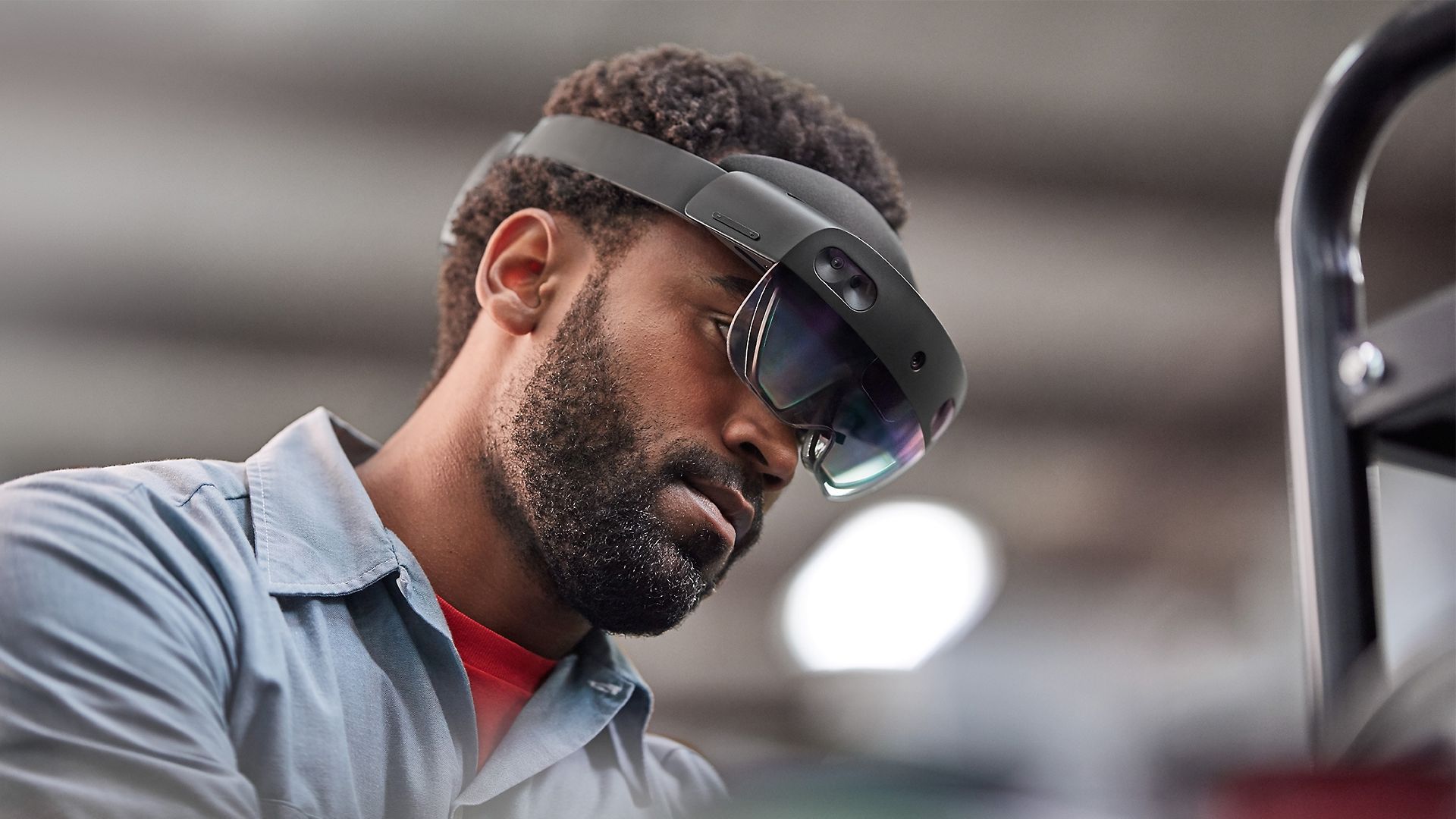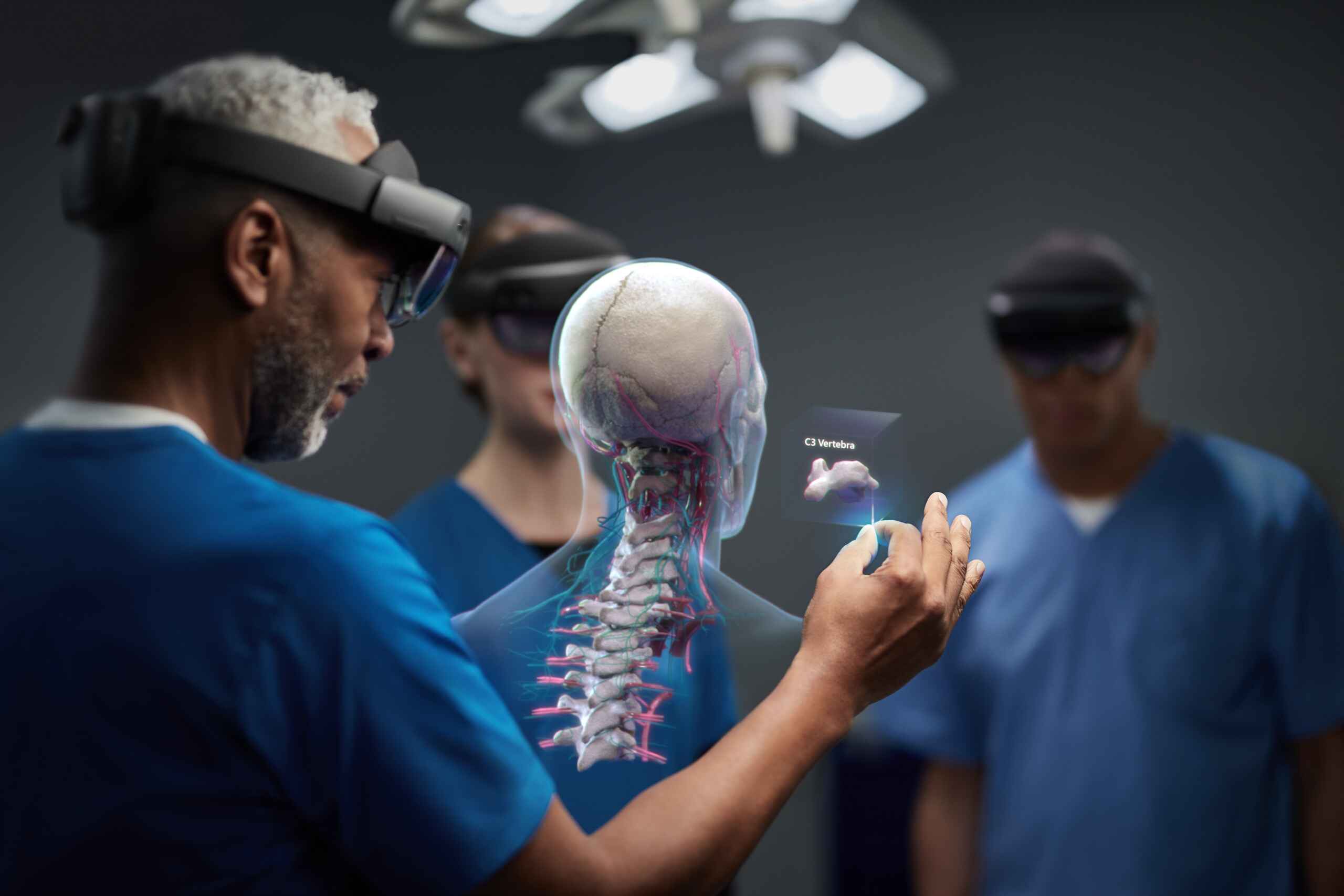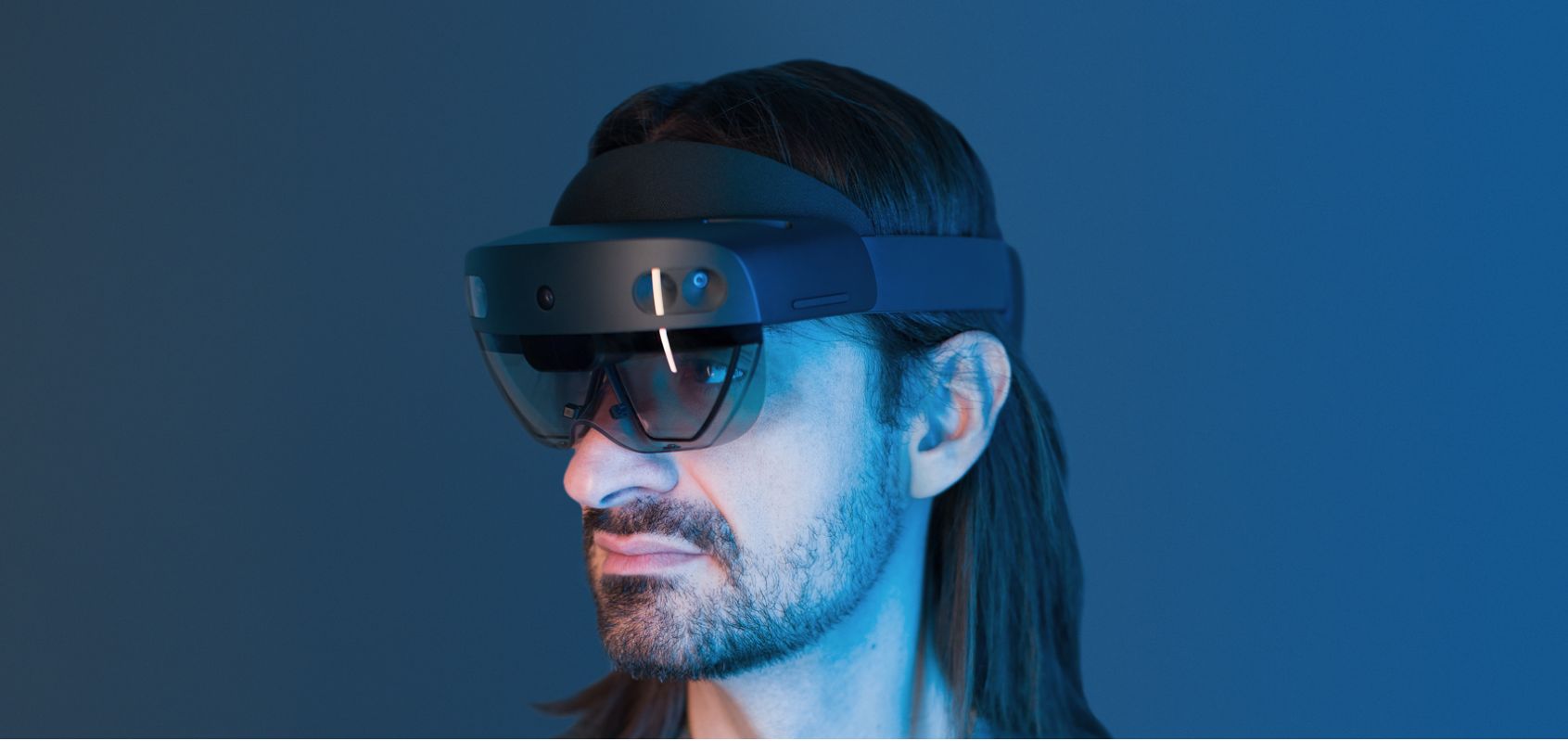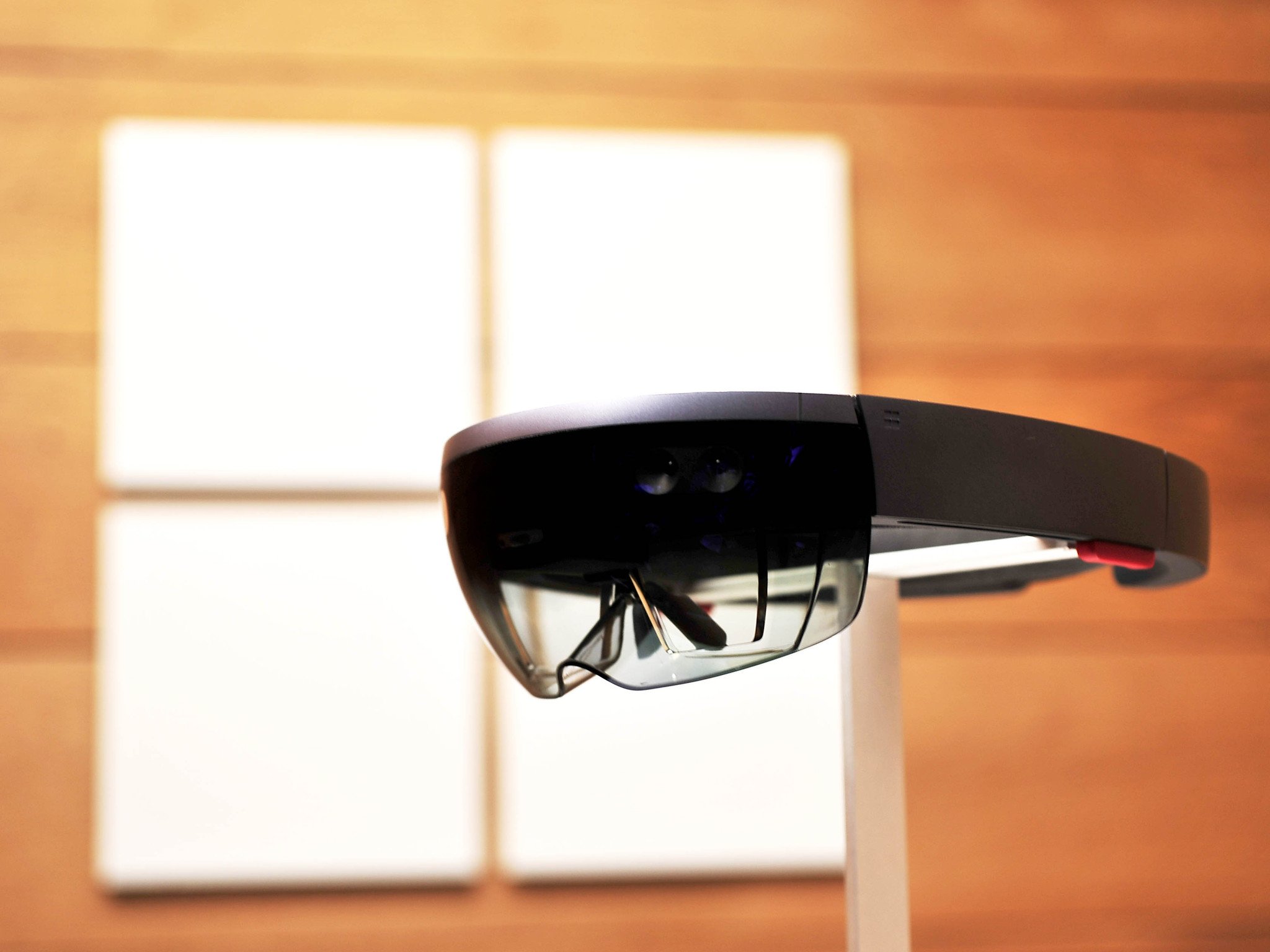Introduction
The Microsoft HoloLens is revolutionizing the way we interact with technology by merging the physical and virtual worlds through augmented reality. This cutting-edge device allows users to view and interact with holograms in their real-world environment, opening up a world of possibilities for various industries, from gaming and entertainment to education and healthcare. However, harnessing the full potential of the Microsoft HoloLens requires a specific set of skills and knowledge.
In this article, we will explore the essential skills needed to effectively use the Microsoft HoloLens. Whether you are a developer, designer, or simply interested in this innovative technology, understanding these skills will equip you to leverage the HoloLens and create immersive experiences.
In order to fully utilize the capabilities of the HoloLens, it is crucial to have a solid grasp of augmented reality and how it differs from virtual reality. Augmented reality overlays digital content onto the real world, enhancing our perception and interaction with the environment. Familiarizing yourself with the concepts and principles of augmented reality will facilitate a smoother learning curve when using the HoloLens.
Understanding Augmented Reality
Before delving into the specifics of using the Microsoft HoloLens, it is important to have a solid understanding of augmented reality (AR) and its applications. Augmented reality is a technology that blends the real world and computer-generated content, allowing for an enhanced and interactive user experience.
AR works by overlaying virtual elements onto the physical world through the use of specialized devices, such as the Microsoft HoloLens. Unlike virtual reality, which immerses users in a completely virtual environment, AR integrates digital information seamlessly into the real world.
To effectively harness the capabilities of the HoloLens, it is crucial to understand the key components of augmented reality. These include:
1. Tracking: AR devices like the HoloLens use advanced sensors to track the user’s position and movement, ensuring that virtual elements align properly with the physical environment.
2. Anchoring: Anchoring is the process of placing virtual objects in the real world. The HoloLens utilizes spatial mapping and spatial sound to anchor holograms to physical surfaces and maintain their position as the user moves around.
3. Interaction: Interacting with augmented reality involves gestures, voice commands, and even eye tracking. With the HoloLens, users can manipulate and interact with virtual objects using hand gestures, gaze, and voice commands, providing a natural and intuitive user interface.
4. Content Creation: Creating AR content requires knowledge of 3D modeling and design software. This allows developers and designers to create realistic and captivating holographic experiences that seamlessly integrate with the real world.
Understanding these fundamental aspects of augmented reality will provide a solid foundation for using the Microsoft HoloLens effectively. It enables users to make the most of the device’s features and create immersive augmented reality experiences that are intuitive and engaging.
Familiarity with Windows 10
Another essential skill for using the Microsoft HoloLens is familiarity with the Windows 10 operating system. The HoloLens runs on Windows 10, and having a strong understanding of its features and functionality will enable users to navigate and utilize the device seamlessly.
Windows 10 is a versatile and powerful operating system that offers a wide range of tools and applications to enhance productivity and creativity. Some key elements of Windows 10 that are especially relevant to HoloLens users include:
- Cortana Integration: Cortana is Microsoft’s virtual assistant, and it is integrated into Windows 10. Users can interact with Cortana using voice commands, which is particularly useful when using the HoloLens as it eliminates the need for manual input.
- Universal Windows Platform (UWP): The Universal Windows Platform allows developers to create applications that run across multiple devices, including the HoloLens. Being familiar with UWP development will enable users to explore and leverage a wide range of applications on the HoloLens.
- Windows Store: The Windows Store provides access to a vast library of applications and experiences specifically designed for Windows 10. Users can browse and download various HoloLens-compatible apps, ranging from entertainment and gaming to productivity and education.
- Microsoft Edge: Microsoft Edge is the default web browser in Windows 10 and offers a built-in web browsing experience on the HoloLens. Familiarity with Edge will facilitate accessing web-based content and information while wearing the HoloLens.
By having a strong understanding of Windows 10, users will be able to navigate the HoloLens interface, install and configure applications, utilize Cortana’s capabilities, and effectively integrate the HoloLens into their existing Windows 10 ecosystem.
Overall, familiarity with Windows 10 is crucial for maximizing the potential of the Microsoft HoloLens. It allows users to seamlessly integrate the device into their daily workflow and explore a wide range of applications and experiences tailored for the HoloLens platform.
Knowledge of 3D Modeling and Design
One of the fundamental skills required to effectively use the Microsoft HoloLens is a solid knowledge of 3D modeling and design. The HoloLens enables users to interact with virtual 3D objects in the real world, and having the ability to create and manipulate these digital assets is crucial for developing immersive experiences.
3D modeling refers to the process of creating three-dimensional objects using specialized software tools. These objects can range from simple geometrical shapes to complex, highly detailed models. Designing for augmented reality requires an understanding of how these 3D models will interact with the real world and how they can be seamlessly integrated into the user’s environment.
To effectively utilize the HoloLens, users should have experience with popular 3D modeling and design software such as Blender, Maya, or 3ds Max. These tools allow users to create detailed 3D models that can be imported into the HoloLens environment.
Additionally, understanding the principles of design is crucial for creating visually appealing and user-friendly holographic experiences. This includes knowledge of color theory, composition, lighting, and user interface design. Designing for augmented reality requires consideration of how the virtual objects will interact with the user’s real-world environment, making it important to strike a balance between realism and functionality.
By having a strong foundation in 3D modeling and design, users can develop captivating holographic experiences that leverage the full capabilities of the HoloLens. From architectural visualizations and product designs to interactive educational content, the possibilities are vast when armed with the skills to create and manipulate 3D models.
It is worth noting that while a deep understanding of 3D modeling and design is beneficial, there are resources available for those who are new to this field. Online tutorials, courses, and communities can provide guidance and support in building the necessary skills to create compelling augmented reality content using the HoloLens.
Proficiency in Developing Mixed Reality Applications
To fully leverage the capabilities of the Microsoft HoloLens, it is essential to have proficiency in developing mixed reality applications. Developing applications for the HoloLens involves a combination of skills in coding, spatial mapping, and user interaction design.
The HoloLens platform primarily relies on the Universal Windows Platform (UWP) for application development. UWP allows developers to create applications that can run on a variety of Windows devices, including the HoloLens. This means that developers with existing knowledge and experience in UWP development can easily transition to developing for the HoloLens.
Developing mixed reality applications for the HoloLens requires a solid understanding of 3D programming concepts, as you will be working with spatial mapping, holograms, and spatial sound. Proficiency in programming languages such as C# and Unity 3D is beneficial, as they are commonly used for HoloLens application development.
Additionally, knowledge of spatial mapping is crucial for creating realistic and seamless holographic experiences. Spatial mapping allows the HoloLens to scan and understand the user’s physical environment, enabling virtual objects to interact and align correctly with surfaces and objects in the real world. Understanding how to utilize spatial mapping data in your application will greatly enhance the user’s experience.
User interaction design is also a critical aspect of mixed reality application development. Designing intuitive and natural ways for users to interact with holograms, such as using gestures, voice commands, and gaze tracking, requires a deep understanding of user experience (UX) principles. Creating an immersive and intuitive interface is essential to ensure that users can easily navigate and interact with your application.
To stay updated with the latest developments in HoloLens application development, it is important to actively engage with the HoloLens developer community. Microsoft provides documentation, tutorials, and forums where developers can share knowledge and seek assistance when needed. Attending workshops, conferences, and participating in hackathons focused on mixed reality development can also provide valuable insights and networking opportunities.
By honing your skills in developing mixed reality applications, you can unlock the full potential of the HoloLens and create innovative and immersive experiences for various industries, including gaming, education, healthcare, and more.
Strong Problem-Solving and Troubleshooting Skills
Having strong problem-solving and troubleshooting skills is essential when working with the Microsoft HoloLens. As a cutting-edge technology, the HoloLens may present various challenges and issues that require quick thinking and effective solutions.
Problem-solving skills are crucial for diagnosing and resolving technical issues that may arise during HoloLens usage or application development. These skills involve breaking down complex problems into smaller, manageable parts and systematically finding solutions. Whether it’s debugging code, troubleshooting hardware components, or troubleshooting connectivity issues, being able to identify the root cause of a problem and effectively solve it is vital.
Troubleshooting skills go hand in hand with problem-solving skills. Troubleshooting involves actively seeking and identifying issues or errors and determining the best course of action to resolve them. This skill requires a combination of technical knowledge, critical thinking, and patience. Troubleshooting may involve investigating software conflicts, device calibration, or network connectivity issues.
With the HoloLens being an augmented reality device, it is important to be prepared for unforeseen challenges and unexpected behavior. The ability to think creatively and adapt to unique situations is essential for troubleshooting and finding workarounds when facing technical obstacles or limitations, whether it’s a hardware constraint or a software compatibility issue.
To develop strong problem-solving and troubleshooting skills, it is beneficial to engage in active learning and continuously enhance your technical knowledge. Staying up to date with the latest HoloLens updates, browsing community forums, and participating in HoloLens development communities can provide valuable insights and solutions to common issues and challenges faced by HoloLens users and developers.
Furthermore, documenting encountered problems and solutions as you work with the HoloLens can create a valuable resource for future reference. It allows you to build a troubleshooting knowledge base that can be shared with other HoloLens enthusiasts and developers, contributing to the growth of the HoloLens community.
By developing strong problem-solving and troubleshooting skills, you will be better equipped to overcome challenges and effectively utilize the Microsoft HoloLens, leading to a smoother and more enjoyable experience for both users and developers.
Comfort with Working in a Team
Working effectively in a team is an essential skill when using the Microsoft HoloLens, especially when collaborating on projects or developing mixed reality applications. The HoloLens offers exciting opportunities to create immersive experiences, and working collaboratively with others can enhance the quality and creativity of these projects.
Collaboration is crucial in the development process of HoloLens applications. Teams typically consist of individuals with diverse skill sets, including developers, designers, 3D modelers, and content creators. Each team member brings unique expertise to the table, and collectively, they can create more comprehensive and polished mixed reality experiences.
Being comfortable with working in a team means being open to sharing ideas, actively listening to others’ perspectives, and embracing constructive feedback. It involves effective communication, both in expressing your own ideas and understanding the ideas and requirements of others. Clear and concise communication fosters teamwork and ensures that everyone is aligned and working towards the same goals.
Collaborating in a team setting also requires strong interpersonal skills. This includes being respectful and supportive of each team member, valuing different perspectives, and resolving conflicts in a professional manner. It is important to create an environment where everyone feels comfortable contributing their ideas and opinions, fostering a positive and creative team dynamic.
Along with interpersonal skills, strong project management and organization skills are essential when working in a team. This involves setting objectives, assigning tasks, and managing deadlines and milestones. Efficient project management ensures that the team stays on track and delivers high-quality results in a timely manner.
Furthermore, being adaptable and flexible are important qualities when working in a team. The development process of HoloLens applications may require adjustments or changes along the way, and teams must be able to adapt to new requirements and challenges. This includes being open to learning new skills, exploring new technologies, and embracing new ways of working.
Overall, being comfortable with working in a team is a valuable skill when using the Microsoft HoloLens. It allows for collaboration, innovation, and the creation of exceptional mixed reality experiences. By fostering effective teamwork, you can unleash the full potential of the HoloLens and achieve remarkable results that would be challenging to accomplish individually.
Good Communication and Presentation Skills
Having good communication and presentation skills is key when using the Microsoft HoloLens, particularly when sharing and showcasing augmented reality experiences with others. Effective communication and presentation skills ensure that your ideas and concepts are clearly conveyed, maximizing understanding and engagement from your audience.
Clear and concise communication is crucial when working with others on HoloLens projects or presenting your ideas. This includes being able to explain complex concepts in a way that is easily understood by individuals with varying levels of technical knowledge. Whether you are discussing project requirements with team members or presenting a demo to stakeholders, a strong command of communication skills will enable effective collaboration and convey the value of your work.
In addition to verbal communication, non-verbal communication is also important when using the HoloLens. HoloLens experiences often involve gestures, body language, and eye contact, which can enhance the user’s interaction and understanding. Being mindful of your non-verbal communication cues can make interactions with holograms and others more engaging and natural.
Another aspect of good communication and presentation skills is the ability to create compelling and visually appealing presentations. This includes selecting appropriate visuals, incorporating multimedia elements, and organizing your content in a cohesive and engaging manner. Using storytelling techniques and structuring your presentation effectively will captivate your audience’s attention and effectively convey your message.
Practice and preparation are key in honing your communication and presentation skills. Take the time to rehearse your presentation, ensuring that you are confident and comfortable with the material. Receiving feedback from others can also help improve your delivery and address any areas that may need refinement.
Good communication and presentation skills are not only important during the development process but also when showcasing your work to clients, stakeholders, or potential users. Being able to articulate the benefits and potential applications of the HoloLens and augmented reality can help generate excitement and support for your projects.
Lastly, incorporating active listening skills into your communication process is crucial. Actively listening to feedback, ideas, and suggestions from others demonstrates respect and openness, and it can lead to valuable insights and improvements in your work.
By possessing good communication and presentation skills, you can effectively communicate your ideas, collaborate with others, and inspire enthusiasm and understanding for the Microsoft HoloLens and the possibilities of augmented reality.
Adaptability and Willingness to Learn
Adaptability and a willingness to learn are essential qualities when using the Microsoft HoloLens. As a rapidly evolving technology, the HoloLens and its associated tools and software are constantly being updated and improved. Being adaptable and open to acquiring new skills and knowledge is crucial to staying current and maximizing the potential of the HoloLens.
Adaptability involves being flexible and able to adjust to new situations and changing requirements. As new features and functionalities are introduced, being open to incorporating these advancements into your workflows and projects can greatly enhance the quality and effectiveness of your HoloLens experiences. This includes exploring new software development kits (SDKs), experimenting with different interaction techniques, and exploring new use cases for augmented reality.
Being willing to learn is a key attribute when working with the HoloLens. This technology is constantly evolving, and there is always something new to discover and master. Continuously seeking out opportunities for learning, such as engaging with online communities and resources, attending workshops, and experimenting with new tools and techniques, allows you to continually expand your skill set and stay at the forefront of HoloLens development.
In addition, the HoloLens community is vibrant and filled with individuals who are passionate about augmented reality and willing to share their knowledge and experiences. Actively engaging with this community can provide valuable insights, tips, and support. Participating in forums, joining developer groups, and attending conferences and meetups focused on HoloLens development are excellent ways to learn from others and build relationships within the industry.
Adaptability and willingness to learn are especially important because the HoloLens is being adopted across various industries, each with its own unique challenges and requirements. Being open to acquiring knowledge in domains such as healthcare, education, manufacturing, and entertainment can open doors to exciting and innovative opportunities.
Furthermore, understanding the broader landscape of virtual and augmented reality can provide valuable context and insights into the evolving technology ecosystem. Familiarity with related technologies, such as virtual reality headsets, can help identify opportunities for cross-platform integration or collaboration.
By embracing adaptability and maintaining a hunger for learning, you can fully exploit the potential of the Microsoft HoloLens and create compelling, innovative, and immersive experiences. Augmented reality is still in its early stages, and there are countless possibilities waiting to be explored and realized. Having a growth mindset and being adaptable will ensure that you are at the forefront of this exciting technological revolution.
Conclusion
The Microsoft HoloLens presents an incredible opportunity to immerse ourselves in the world of augmented reality and revolutionize the way we interact with technology. However, to fully leverage the capabilities of the HoloLens, certain skills are necessary.
Understanding augmented reality and its unique characteristics is the foundation for using the HoloLens effectively. Familiarity with the Windows 10 operating system is also crucial, as it powers the HoloLens and provides access to a wide range of applications and tools. Additionally, knowledge of 3D modeling and design allows for the creation of captivating, realistic holographic experiences.
Proficiency in developing mixed reality applications is essential for unleashing the full potential of the HoloLens. Strong problem-solving and troubleshooting skills enable users to overcome challenges and ensure a smooth experience. Comfort with working in a team fosters collaboration and creativity, while good communication and presentation skills allow for effective sharing of ideas and concepts.
Lastly, adaptability and willingness to learn are vital qualities when working with the HoloLens. The rapid pace of technological advancement demands flexibility and a commitment to continuously acquiring new knowledge and skills.
By developing these skills and qualities, individuals can harness the capabilities of the Microsoft HoloLens to their fullest potential. Whether you are a developer, designer, or simply an enthusiast, these skills will enable you to create immersive experiences and contribute to the expanding field of augmented reality.
As the HoloLens continues to evolve and find applications in various industries, the demand for these skills will continue to grow. Embracing these skills will not only enhance career prospects but also allow individuals to be at the forefront of this exciting technological revolution.







